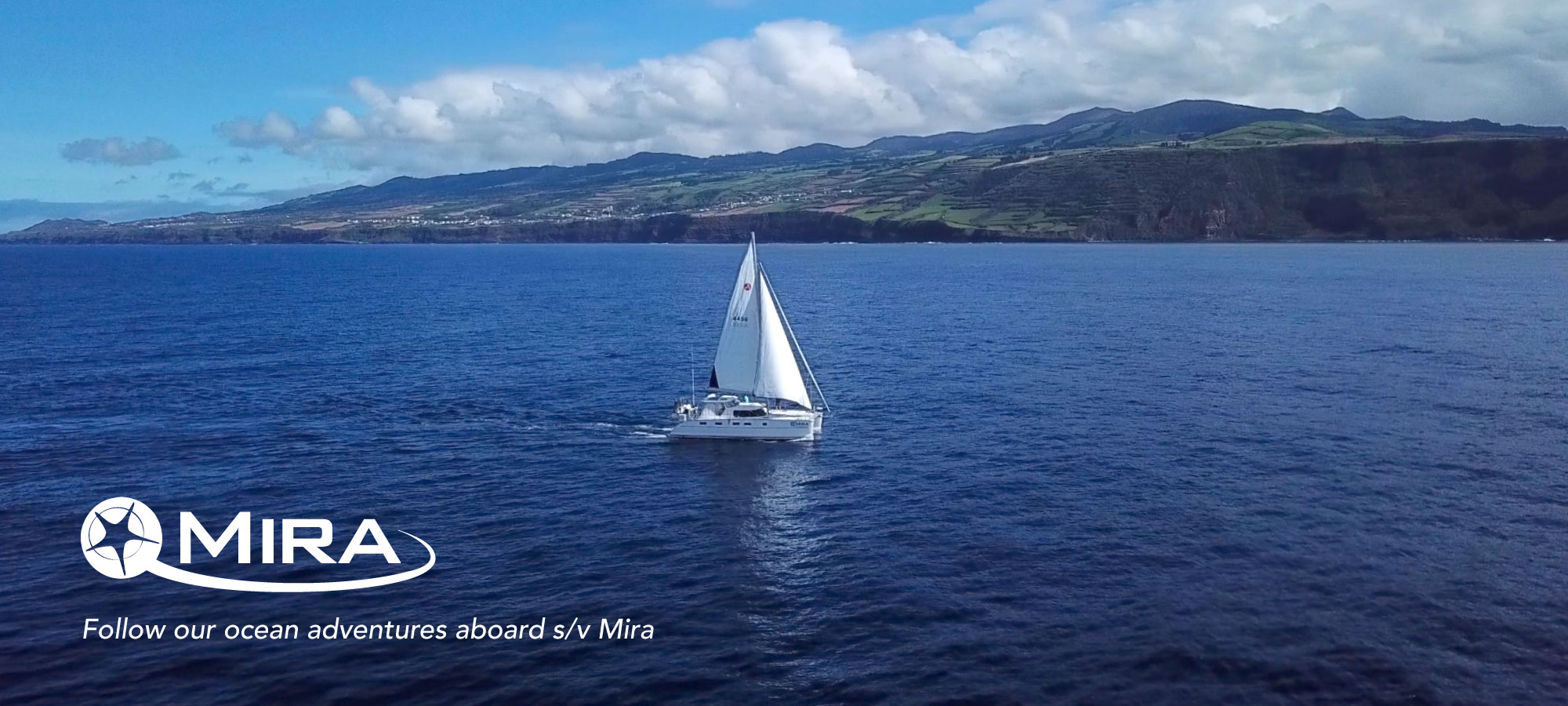Finally, we have an answer!! What is the ONE favorite place we’ve sailed to?? The Azores. Hands down – no contest. If you ever have a chance to visit this spectacular group of islands, GO!!
The Azores is an archipelago composed of nine volcanic islands that sits 2/3rds of the way across the north Atlantic Ocean between Atlanta, GA, and Europe. The islands are 850 miles west of Portugal and have been part of Portugal since the 14th century.

The Azores were born quite dramatically hundreds of thousands of years ago when three tectonic plates crossed paths deep within the Atlantic Ocean and jerked and twisted at their junction. The earth’s core thrust mountainous, rocky volcanoes up through the surface, eventually exploding, spewing ash and lava, forming the spectacularly rocky and fertile Azores.
Within days of our arrival in the Azores, we learned about their unusual climate. Due to their location in the middle of a volatile Atlantic Ocean environment, the weather is difficult to predict and changes dramatically – sometimes hour to hour. Locals are fond of saying that they often experience all 4 seasons in one day in the Azores. It can be cloudy and chilly in the morning and sunny, breezy and warm by lunch and raining by dinner time!
After returning to Sao Miguel from our visit back to the States, we sailed overnight to Terceira and arrived at the port town of Angra do Heroismo, an UNESCO World Heritage site. The marina at the base of this fascinating, preserved old city would be our home for the next days.







Hiking along the rocky cliffs with views of the sparkly blue waters of the north central part of the island was one of our favorite days on Terceira. The Baias de Agualva trail follows along the jagged coast and alternately curves out onto peninsulas like the picturesque Ponta do Misterio and runs back down the rough hillsides.
Algar do Carvão is one of the few volcanoes in the world where people can visit, and the only volcano in the world where you can go inside the chimney and chambers. A rare phenomenon occurred thousands of years ago that left the volcano extinct and empty and allows visitors inside without getting burned alive. We literally gasped upon descending into the volcano. Drippy, stone steps circle down into the volcano ending in a clear rainwater pool and stalactites and stalagmites protruding from cavern walls.
Furnas do Enxofre are a collection of fumaroles which are geothermal cracks in the earth where plumes of smelly gas escape. For us, it was just another beautiful example of Mother Nature’s handiwork on Terceira.
Travel for us would not be complete without local food tasting. Terceira was no exception. We received recommendations for several “don’t miss” dishes. Some we enjoyed – others we were just happy for the experience!




The Azores are engulfed by the hammering, frothy surf of the Atlantic Ocean. But, because of their volcanic origin, long, sandy beaches cannot be found. In fact, locals and visitors alike have learned to adapt. We were quite surprised to see sunbathers lounging lazily on their towels spread on concrete. Different, but it works – especially when their view is focused on the natural ocean pools carved out by the pounding of the Atlantic on their rocky coastline.


NEXT BLOG — THE ISLAND OF SAO MIGUEL – THE HIGHLIGHT OF THE AZORES!!

So beautiful! Fun adventures!
Thanks for sharing!
LikeLike